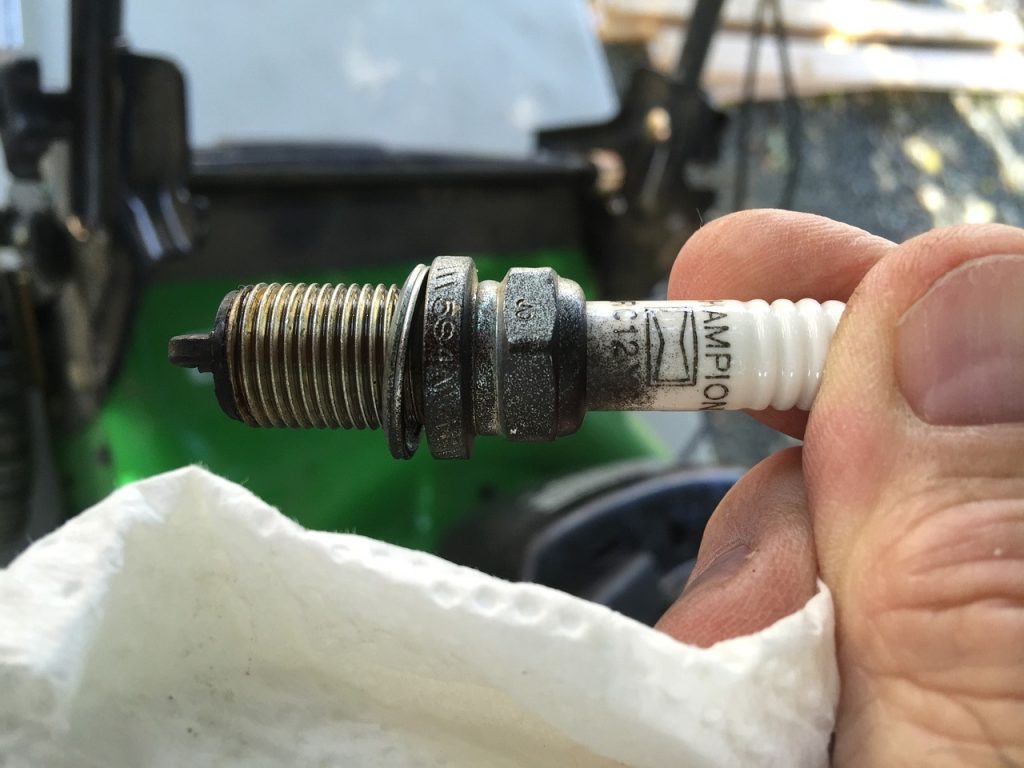When we turn on the combustion engine of our car and the vehicle roars to life, it does so thanks to the intricate symphony of mechanical and electrical systems under the hood. One of these essential components are spark plugs. These small and often overlooked parts play a crucial role in igniting the air-fuel mixture in our engine cylinders and ultimately powering our cars. But what happens when it’s time to replace these? Is it necessary to invest in special tools, or can this task be accomplished with the common tools we find in our garage?
In this article, we will take a closer look at the process of spark plug replacement. We’ll explore the inner workings of spark plugs and take a look at the tools required for the job.
Tools and Equipment for Spark Plug Replacement
Let’s take a look at the essential tools and equipment needed for spark plug replacement.
To get started, you’ll need some fundamental tools that are likely already a part of your garage inventory. These include:
- Spark Plug Socket and Ratchet: The spark plug socket is specially designed to securely grip and remove spark plugs from their chambers. A ratchet handle provides the necessary torque for the job.
- Extension Bar: This elongated piece is useful for reaching deep-set spark plugs in some engine configurations.
- Spark Plug Gap Gauge: A gap gauge is indispensable for ensuring that the new spark plugs have the correct gap size, crucial for optimal ignition performance.
Common Tools Used
In most cases, these basic tools are all you need to replace your spark plugs effectively. However, there are a few additional tools you might come across or choose to use:
- Anti-Seize Compound: Applying a small amount of anti-seize compound to the spark plug threads can help prevent them from seizing in the engine block, making future replacements easier.
- Torque Wrench: A torque wrench can ensure that you tighten the spark plugs to the manufacturer’s recommended specifications, preventing over-tightening or under-tightening.
- Dielectric Grease: This silicone-based grease is used to coat the inside of the spark plug boot, facilitating easier removal in the future and ensuring a good electrical connection.
Special Tools
You may also need special tools to perform this task. While the basic and common tools mentioned above are generally sufficient for the task, there are specific scenarios where special tools can come in handy:
- Spark Plug Boot Puller: When dealing with stubborn or hard-to-reach spark plug boots, a boot puller can simplify the process of removal without damaging the wires.
- Magnetic Spark Plug Socket: In situations where spark plugs are deeply recessed, a magnetic spark plug socket can aid in extracting them safely.
- Spark Plug Thread Chaser: If the threads in the cylinder head are dirty or damaged, a thread chaser can clean and restore them, ensuring a secure fit for the new spark plugs.
While these special tools aren’t always necessary for routine spark plug replacement, they can save time and frustration in some challenging situations.
Special Tools for Spark Plug Replacement
Now that we now clarified the essential and common tools required for spark plug replacement, let’s take a look at the realm of special tools. These specialized instruments can be very helpful in specific scenarios, making the process more efficient and hassle-free.
1. Spark Plug Boot Puller: Imagine a scenario where the spark plug boot is firmly stuck on the plug, resisting your attempts to remove it. This is where a spark plug boot puller can be very helpful. It’s a small but effective tool designed to grip the boot securely and help you detach it without damaging the ignition wires. Its function can save you from costly replacements down the road.
2. Magnetic Spark Plug Socket: When it comes to engine configurations, some spark plugs are tucked away in deep, narrow crevices. Retrieving them with a regular socket can therefore be difficult. This is where magnetic spark plug sockets come in handy. These are equipped with a magnetic interior that securely holds the spark plug during removal and installation. This tool minimizes the chances of dropping the spark plug into the engine bay, preventing potential damage and headaches.
3. Spark Plug Thread Chaser: If you’ve ever encountered dirty or damaged threads in the cylinder head, you know how difficult they can be to handle. A spark plug thread chaser is a specialized tool designed to salvage these threads. It cleans and restores the cylinder head threads, ensuring a snug and secure fit for the new spark plugs. This can be a lifesaver in situations where thread damage could otherwise lead to costly repairs.
Steps for Spark Plug Replacement
Let’s go through the step-by-step process of spark plug replacement. We will go through the intricacies of the task and provide insights into when and why special tools might come into play.
Step 1: Preparation and Safety Measures: Before you begin, ensure your engine is cool to the touch to prevent burns. Disconnect the vehicle’s battery to avoid any accidental electrical mishaps during the process. Gather all the necessary tools and wear safety gear, including gloves and safety glasses.
Step 2: Locating and Accessing the Spark Plugs: Open your vehicle’s hood and locate the spark plug wires or ignition coil packs. These components are usually connected to the spark plugs. Gently disconnect the wires or packs to access the spark plugs beneath.
Step 3: Removing the Old Spark Plugs: Using your spark plug socket and ratchet, carefully fit the socket onto the old spark plug. Apply steady and even pressure in a counterclockwise direction to loosen and remove the plug. Be cautious not to force it, as this can damage the threads in the cylinder head.
Step 4: Gap Adjustment and Preparation of New Spark Plugs: Inspect the old spark plugs and the manufacturer’s specifications to determine the correct gap size for your new spark plugs. Use a gap gauge to adjust the gap accordingly. Preparing your new spark plugs with the correct gap is crucial for optimal ignition performance.
Step 5: Installing the New Spark Plugs: Carefully insert the new spark plugs into the spark plug socket and lower them into the cylinder head. Gently hand-tighten them initially, being cautious not to cross-thread. Once they are snug, use your torque wrench to apply the manufacturer’s recommended torque settings to secure them firmly.
Step 6: Reconnecting Ignition Components: With the new spark plugs in place, reconnect the spark plug wires or ignition coil packs. Make sure each connection is secure, and double-check that you haven’t accidentally swapped the wires. Reconnect the vehicle’s battery.
Throughout this process, you might find scenarios where special tools can be advantageous:
- Spark Plug Boot Puller: If spark plug boots are stubborn or hard to remove, a boot puller can make the task easier without risking damage to the wires.
- Magnetic Spark Plug Socket: When working in tight spaces, a magnetic socket can prevent spark plug drops and lost time searching in the engine bay.
- Spark Plug Thread Chaser: If you encounter dirty or damaged threads during removal, a thread chaser can save the day by cleaning and restoring them.
Pros and Cons of Using Special Tools
Let’s look closer at the advantages and disadvantages of utilizing these specialized instruments. Understanding the pros and cons can help you make an informed decision about whether to invest in these tools for your DIY automotive endeavors.
Pros of Using Special Tools:
- Efficiency: Special tools are designed to simplify specific tasks. They can save you time and effort, especially in scenarios where conventional tools might be less effective or more time-consuming.
- Precision: Special tools often offer a higher degree of precision, which is crucial when dealing with delicate components like spark plug boots or threads. This precision can prevent damage and ensure a successful replacement.
- Reduced Risk: Some special tools, such as spark plug boot pullers and magnetic sockets, minimize the risk of accidents during the replacement process. This can save you from potential injuries and costly repairs.
- Professional Results: Special tools can help you achieve results that are akin to what a professional mechanic would produce. This is particularly beneficial if you’re a perfectionist or want to maintain your vehicle at a high standard.
Cons of Using Special Tools:
- Cost: The most apparent drawback is the cost. Special tools can be an additional expense and their usefulness might be limited to specific tasks. If you only plan to replace spark plugs infrequently, the investment may not be justified.
- Storage Space: Owning a variety of special tools can require extra storage space in your garage or workspace. If you have limited storage, this can be a consideration.
- Skill Requirement: Some special tools require a level of skill and familiarity to use effectively. If you’re a novice DIYer, there may be a learning curve involved in mastering these tools.
- Not Always Necessary: It’s essential to remember that not every spark plug replacement job requires special tools. For routine maintenance on vehicles with straightforward engine configurations, basic tools may suffice.


